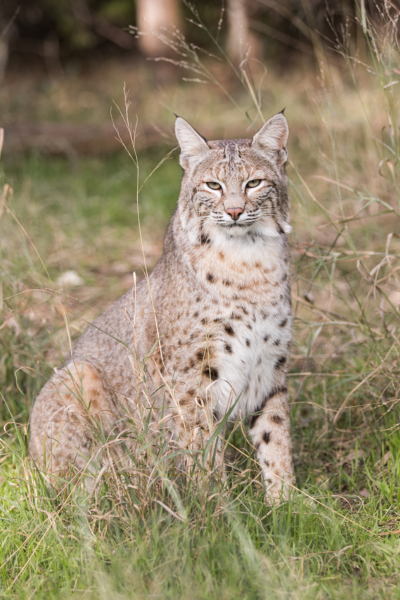About Us
Animals Received Annually for Rehabilitation
Permanent Residents
Native wild animals received since 1977
Full-Time Staff
Mission
To rescue, rehabilitate, and release native wildlife and to provide sanctuary, individualized care, and a voice for other animals in need.
Wildlife Rescue & Rehabilitation receives orphaned, injured, and displaced wildlife and returns as many as possible to the wild. We also provide permanent care in large natural enclosures to farmed animals and non-releasable wildlife. Among the latter are native and non-native wild animals who were victimized by the “pet” trade, held in roadside zoos, or used in research. These include black bears, primates, mountain lions, other mammals, and numerous species of birds and reptiles.
WRR provides advice and assistance for dealing with human-wildlife conflicts in a non-lethal manner. Wildlife Rescue staff work to educate the public about appropriate and respectful relations with Nature and wildlife. Whether through training, education, advocacy, or direct animal care, WRR fulfills its commitment to wildlife protection and ethical relations between humans and the natural world. Because of our commitment to respect the rights and needs of wildlife, the main WRR facilities and grounds are not open to the public except to receive animals in need.
We have received over 200,000 native wild animals since inception. Annually, we rescue over 10,000 animals and respond to more than 17,000 phone inquiries and requests for help. Around 500-600 animals are permanent residents because they are non-releasable due to the nature of their injuries, human desensitization, or the fact that they are non-native species. Part of the permanent residents includes over 250 farmed and domesticated animals who have found refuge at the WRR Sanctuary. Around fifty full-time staff along with interns, apprentices, and numerous volunteers carry out our programs every day. We are accredited by the Global Federation of Animal Sanctuaries (GFAS).
History
Wildlife Rescue & Rehabilitation was founded in 1977 in San Antonio, Texas.
It began as the vision of a young woman in her early twenties. Lynn Cuny saw that many wild animals suffered and died after encounters with humans. Many could have been saved and, with help, returned to the wild. She also saw that some could not be released due to the nature of their injuries (or other factors) and that they could live satisfactory lives in a sanctuary. It was her vision when founding WRR to one day have a 200-acre sanctuary in the Texas Hill Country. This vision became a reality with the contributions, support, and hard work of many people over the years.
WRR began in Lynn’s San Antonio backyard but demand for its services increased so rapidly that within only three years it had to move from her home to a four-acre site outside of San Antonio. In 1986 it became necessary to move again, this time to a 21-acre facility. Since 2001 its primary base of operations has been 212 acres near Kendalia, Texas, a property which was purchased through the generosity of three of our supporters. WRR serves San Antonio, Austin, surrounding counties, and occasionally other parts of Texas as well. We also provide assistance on a national basis to wild animals in need of sanctuary.
Ethics
WRR rescues and cares for all wildlife, including native and non-native species. We believe that all animals — rare or common, regardless of species — are deserving of our care, attention, and respect.
Animals are intelligent, sentient individuals. We refer to them as “he/she” or “they/them,” or by species. The words “it” or “thing” are never used to refer to an animal, and “who” is used rather than “that.” If you do not know the gender, choose one: “he” or “she.” Even if your gender choice is wrong, it is more respectful than “it.” This is an important way of demonstrating the respect we ask others to afford all animals.
The Wildlife Rescue Sanctuary was fashioned after what wildlife have in their natural habitats—large open areas with trees, boulders and native grasses. The wild animals are never named, tamed, or placed on exhibit.
WRR is not open to the public for tours and does not use animals in education programs. We do not keep wild animals in captivity for the purpose of subjecting them to the stress of public display even when that display is in the classroom. The use of animals in this manner sends a message to the public that animals can or should be tamed or kept as “pets,” or that they are objects for human diversion, recreation, or educational tools.

